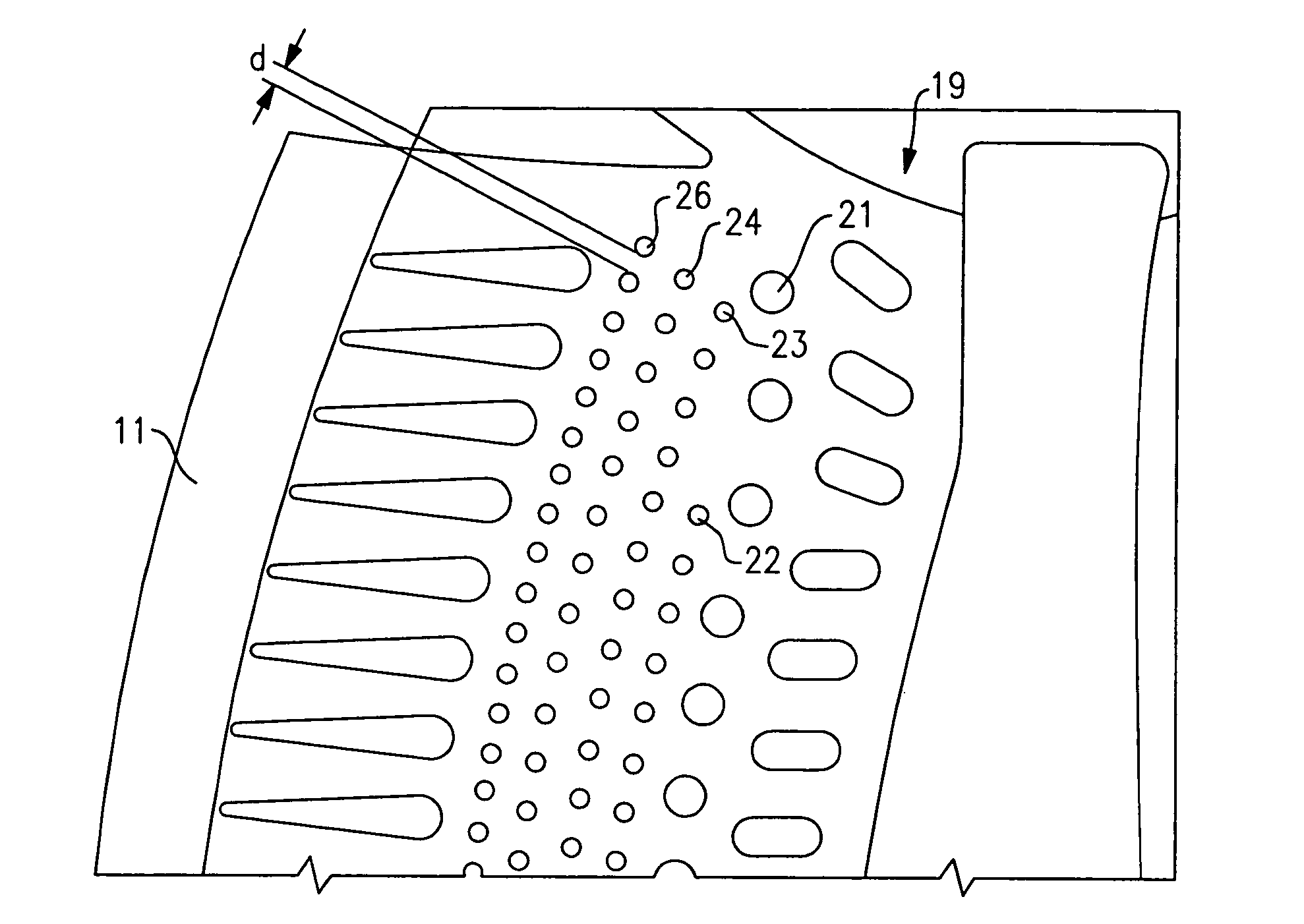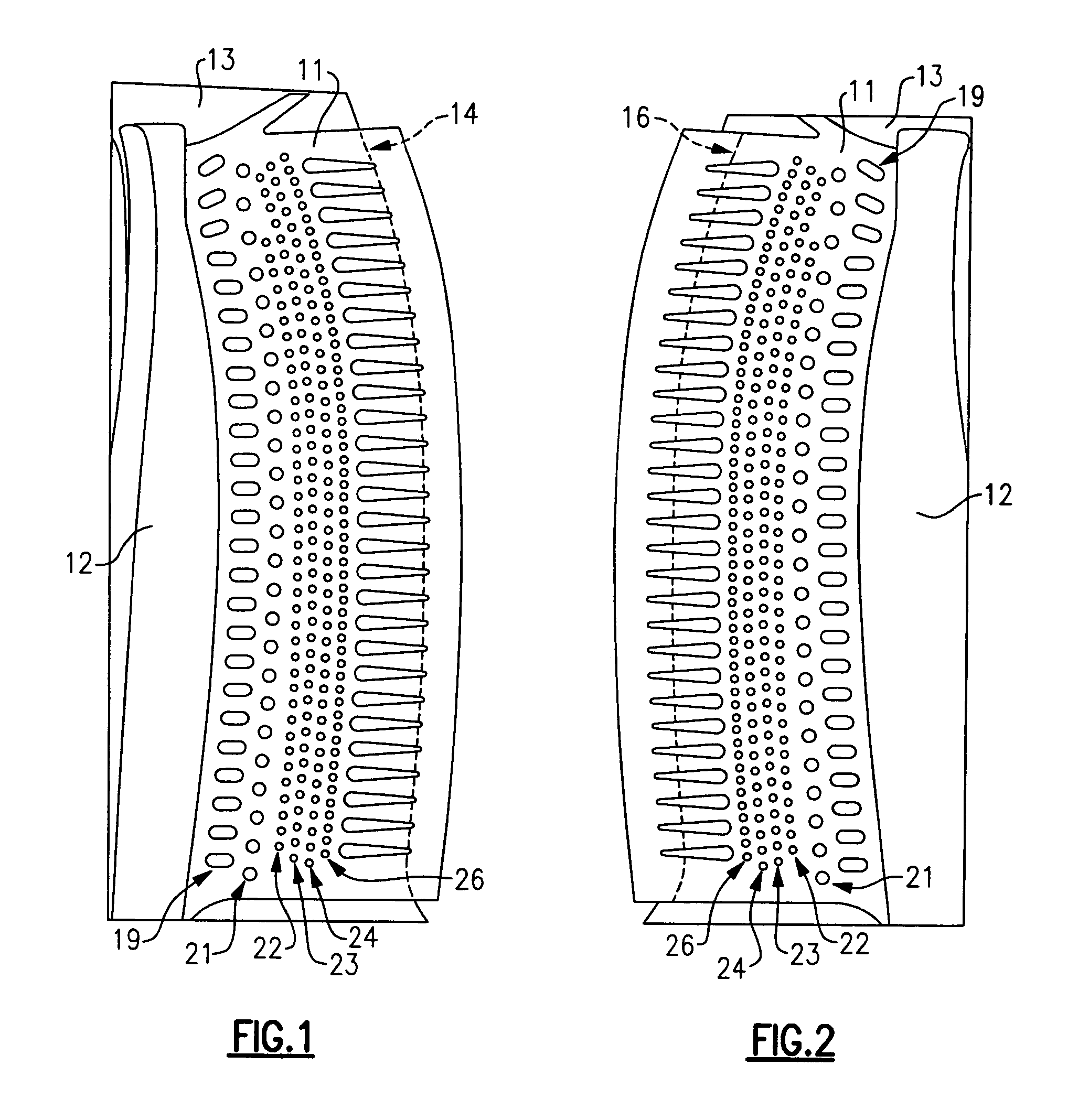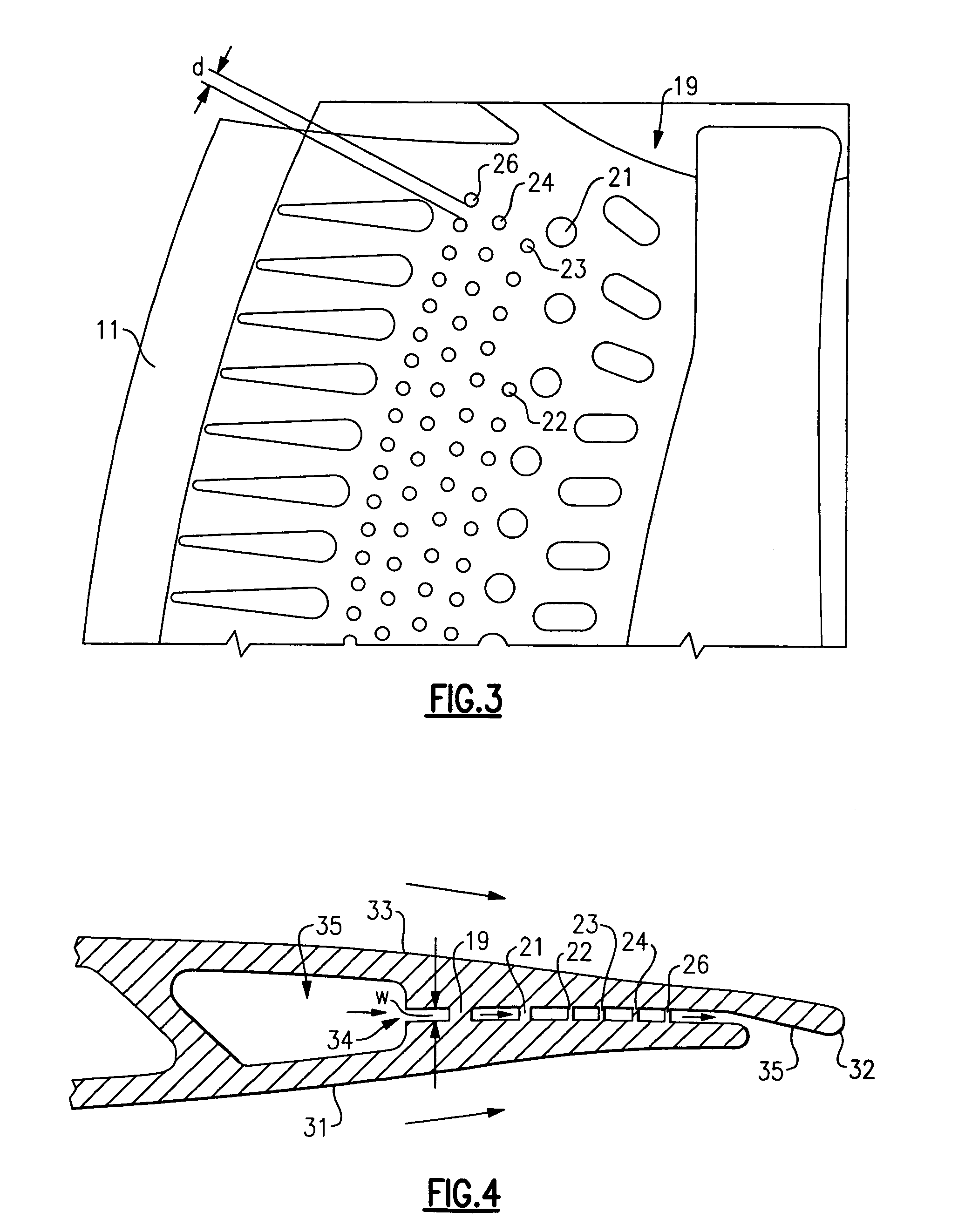Airfoil trailing edge cooling
a trailing edge cooling and airfoil technology, applied in the direction of machines/engines, foundry patterns, machine/engines, etc., can solve the problems of reducing the cooling efficiency of airfoils, limiting casting designs, and achieving the lowest values of aerodynamic losses associated with such blades, so as to improve cooling characteristics and high thermal strain
- Summary
- Abstract
- Description
- Claims
- Application Information
AI Technical Summary
Benefits of technology
Problems solved by technology
Method used
Image
Examples
Embodiment Construction
[0021]The use of refractory metal core (RMC) casting techniques offer certain advantages over the prior art approach of casting with ceramic molds. Such a process is described in U.S. Patent Publication US2003 / 0075300 A1 assigned to the assignee of the present invention and incorporated herein by reference.
[0022]One of the advantages of this RMC casting technology as recognized by the applicants, is that individual elements can be made much smaller than with conventional casting technologies and the features can be customized to almost any shape. Accordingly, the applicants have employed this technology to produce a refined and improved trailing edge cooling channel.
[0023]Referring to FIGS. 1 and 2, there is shown a turbine blade core constructed with the use of a refractory metal (i.e. a refractory metal core or RMC) 11. The RMC core 11 is shown in combination with a ceramic core 12 defining the radial supply cavity, with both of these elements representing negative features in the...
PUM
| Property | Measurement | Unit |
|---|---|---|
| width | aaaaa | aaaaa |
| diameters | aaaaa | aaaaa |
| diameter | aaaaa | aaaaa |
Abstract
Description
Claims
Application Information
 Login to View More
Login to View More - R&D
- Intellectual Property
- Life Sciences
- Materials
- Tech Scout
- Unparalleled Data Quality
- Higher Quality Content
- 60% Fewer Hallucinations
Browse by: Latest US Patents, China's latest patents, Technical Efficacy Thesaurus, Application Domain, Technology Topic, Popular Technical Reports.
© 2025 PatSnap. All rights reserved.Legal|Privacy policy|Modern Slavery Act Transparency Statement|Sitemap|About US| Contact US: help@patsnap.com



